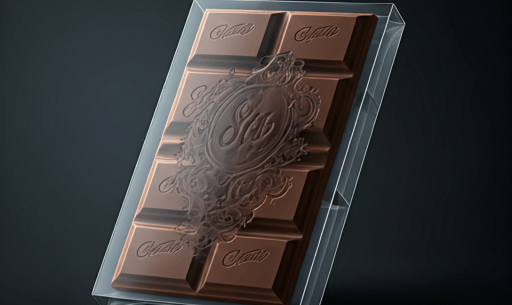Laser Etching Through Packaging: Mondelez's Innovation in Chocolate Personalization
CONFECTIONARYPACKAGING


In the competitive confectionery market, personalization and customization of chocolate products have become increasingly important for enhancing customer experience. However, traditional methods of creating designs on chocolate surfaces, such as molding or hand painting, have significant limitations when it comes to producing customized or personalized designs, especially at the point of sale. These conventional approaches are neither cost-effective nor time-efficient, and often fail to deliver the level of detail and accuracy that modern consumers expect.
The challenge becomes even more complex when considering food safety and manufacturing practices. Current laser etching methods require chocolate products to be unwrapped before marking, which introduces significant risks from a food safety perspective. This exposure to the environment and contact with laser equipment raises concerns about Good Manufacturing Practices. Furthermore, the process of unwrapping and rewrapping products disrupts existing production lines and adds unnecessary complexity to the manufacturing process.
Now, Mondelez has developed an innovative solution to these challenges and filed a patent application on a technology that allows for laser etching of chocolate surfaces through their packaging. This allows for food customization capabilities, addressing both the practical limitations of current methods and the growing demand for personalized products.
The core of the innovation lies in its use of a CO2 laser operating at specific wavelengths, typically between 9000 to 11000 nanometers, with a power range of 1-9 watts. This precise specification allows the laser energy to pass through the packaging material and create detailed marks on the chocolate surface without compromising the structural integrity of the wrapper. The technology achieves this by changing the fat microstructure of the chocolate at the point of laser contact, which alters the way light scatters from the surface, making the etched design visible.
What makes this innovation particularly interesting is its ability to work through various types of packaging materials, including polymeric materials, paper, and even multiple layers of packaging. The patent specifies that the packaging thickness should typically be less than 0.55mm above the chocolate surface for optimal results. This capability eliminates the need to unwrap products before marking, maintaining food safety standards and preserving the efficiency of existing production lines.
The system's versatility extends to its marking capabilities. It can create a wide range of designs, from text and photographs to personalized messages, seasonal designs, logos, and even functional elements like barcodes and QR codes. The technology achieves good resolution levels, capable of producing images with up to 5000 Dots Per Inch (DPI), though typically operating in the 50-2400 DPI range for optimal results.
To ensure consistent quality, the patent also details specific pre- and post-conditioning steps. These conditioning processes, which involve controlled temperature environments, help improve the quality and resolution of the final image. The pre-conditioning step typically involves placing the wrapped chocolate in an environment between 24-30°C, while post-conditioning may involve various temperature ranges depending on the desired outcome.
Moreover, the laser etching process can be completed in less than a minute in many cases, with etching speeds ranging from 800 to 75,000 millimeters per second. This rapid processing capability makes the technology particularly suitable for point-of-sale customization, where quick turnaround times are essential.
This innovation has significant implications for the confectionery industry. It enables manufacturers to offer personalized products without compromising food safety or manufacturing efficiency. The technology can be applied to various chocolate types, including white, milk, dark, and ruby chocolate, and works effectively on both flat and curved surfaces. This flexibility, combined with its ability to maintain packaging integrity, positions it as a potentially transformative development in food customization technology.
